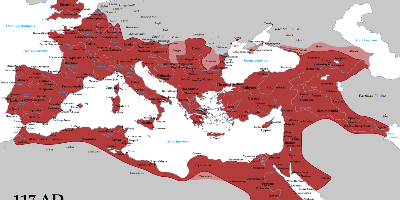1 janv. 550 av. J.-C. - Cyrus the Great Founds the Persian Empire
Description:
Cyrus II of Persia (c. 600 – 530 BC), commonly known as Cyrus the Great, and also called Cyrus the Elder by the Greeks, was the founder of the Achaemenid Empire, the first Persian Empire. Under his rule, the empire embraced all the previous civilized states of the ancient Near East, expanded vastly and eventually conquered most of Western Asia and much of Central Asia. From the Mediterranean Sea and Hellespont in the west to the Indus River in the east, Cyrus the Great created the largest empire the world had yet seen. Under his successors, the empire eventually stretched at its maximum extent from parts of the Balkans (Bulgaria-Paeonia and Thrace-Macedonia) and Eastern Europe proper in the west, to the Indus Valley in the east. His regal titles in full were The Great King, King of Persia, King of Anshan, King of Media, King of Babylon, King of Sumer and Akkad, and King of the Four Corners of the World. The Nabonidus Chronicle notes the change in his title from simply "King of Anshan," a city, to "King of Persia." Assyriologist François Vallat wrote that "When Astyages marched against Cyrus, Cyrus is called 'King of Anshan," but when Cyrus crosses the Tigris on his way to Lydia, he is 'King of Persia.' The coup therefore took place between these two events."The reign of Cyrus the Great lasted c. 30 years. Cyrus built his empire by first conquering the Median Empire, then the Lydian Empire, and eventually the Neo-Babylonian Empire. He led an expedition into Central Asia, which resulted in major campaigns that were described as having brought "into subjection every nation without exception." Cyrus did not venture into Egypt, and was alleged to have died in battle, fighting the Massagetae along the Syr Darya in December 530 BC. He was succeeded by his son, Cambyses II, who managed to conquer Egypt, Nubia, and Cyrenaica during his short rule.
Cyrus the Great respected the customs and religions of the lands he conquered. This became a very successful model for centralized administration and establishing a government working to the advantage and profit of its subjects. In fact, the administration of the empire through satraps and the vital principle of forming a government at Pasargadae were the works of Cyrus. What is sometimes referred to as the Edict of Restoration (actually two edicts) described in the Bible as being made by Cyrus the Great left a lasting legacy on the Jewish religion. According to Isaiah 45:1 of the Hebrew Bible, God anointed Cyrus for this task, even referring to him as a messiah (lit. 'anointed one') and he is the only non-Jewish figure in the Bible to be called so.
Cyrus the Great is also well recognized for his achievements in human rights, politics, and military strategy, as well as his influence on both Eastern and Western civilizations. Having originated from Persis, roughly corresponding to the modern Iranian province of Fars, Cyrus has played a crucial role in defining the national identity of modern Iran. The Achaemenid influence in the ancient world eventually would extend as far as Athens, where upper-class Athenians adopted aspects of the culture of the ruling class of Achaemenid Persia as their own.
Cyrus is a cult figure amongst modern Iranians, with his tomb serving as a spot of reverence for millions of people. In the 1970s, the last Shah of Iran Mohammad Reza Pahlavi identified his famous proclamation inscribed onto the Cyrus Cylinder as the oldest known declaration of human rights, and the Cylinder has since been popularized as such. This view has been criticized by some historians as a misunderstanding of the Cylinder's generic nature as a traditional statement that new monarchs make at the beginning of their reign.
Ajouté au bande de temps:
Date:
1 janv. 550 av. J.-C.
Maintenaint
~ Il y a 2577 ans
